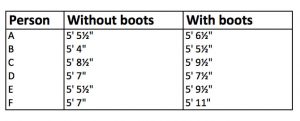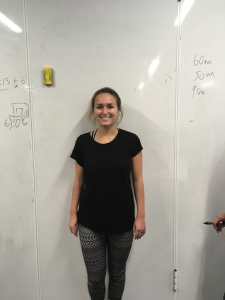These boots are made for measuring!
When marking up the data of the transcriptions files I came across something that I found quite fascinating. This was that heights for the individuals included how tall they were in boots. This little bit of information just kept sitting in my head this unusual fact that measurements were taken when somebody was wearing boots.
So I tried to find out how much height a boot would add. I started looking through trove and online and I couldn’t find anything that was absolute. Most of the things I came across suggested it would add an inch. But then this research got me thinking about how the data is collected for height; were people measured by using measuring tape or was the wall a ruler and people had to stand next to it. Were people told to stand up straight or just told to stand. Just all these variables about this one little bit of data of height just kept on making me try and work out how it was generated. So, I decided to conduct a little experiment using other people in the class as guinea pigs.
My experiment was that I asked the class to stand against the wall and have their height measured both in boots and not in boots with no other instructions. Some interesting things observed is that some people move their heads in various ways giving themselves extra height or losing height. People took measurements from different points making the measurements inconsistent. I for one intentionally slouched for my height without boots but stood as tall as I could with boots to try and give myself the biggest variation. Below is the table of our results showing that on average most people would gain an inch when in boots with some outliers caused by intentionally trying to manipulate the data.
In conclusion I feel that this is an interesting way of looking at how data is collected on a small-scale as it shows that without knowing how the data was collected it’s hard to know how you can use it.
By Steven Doyle







